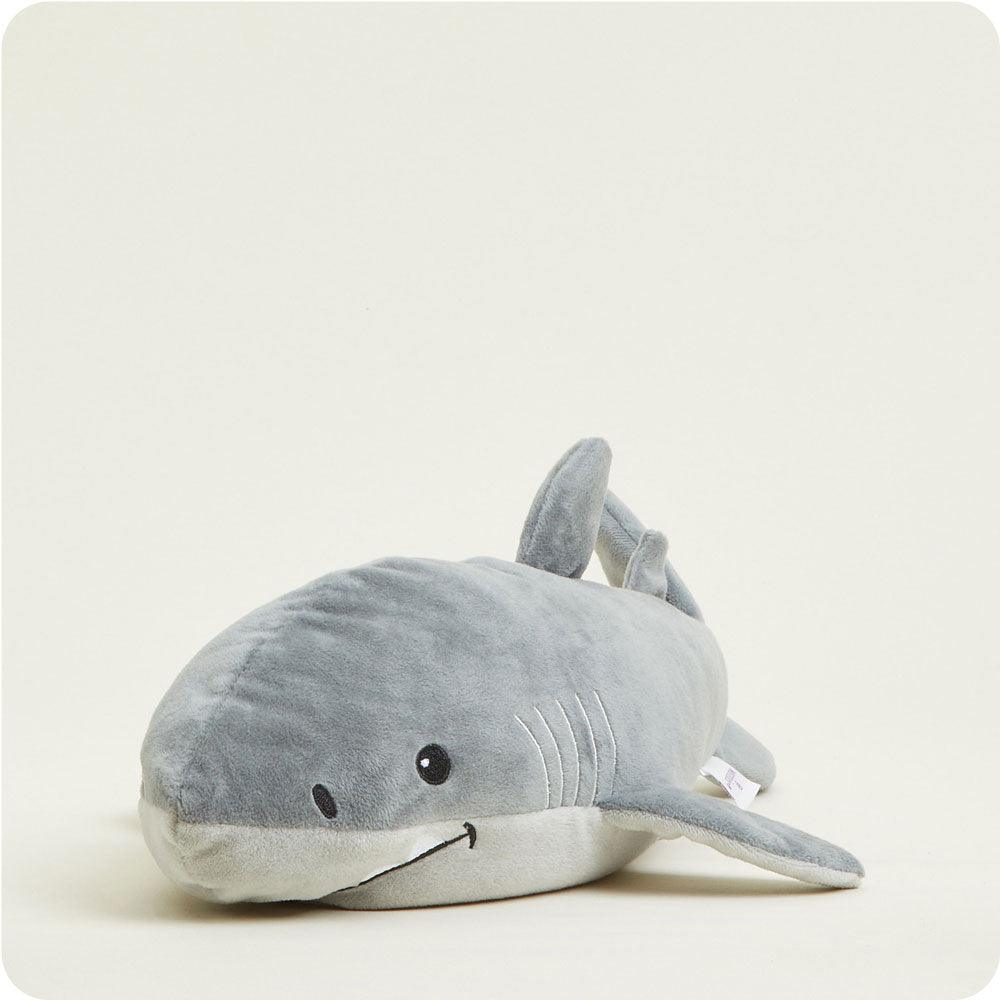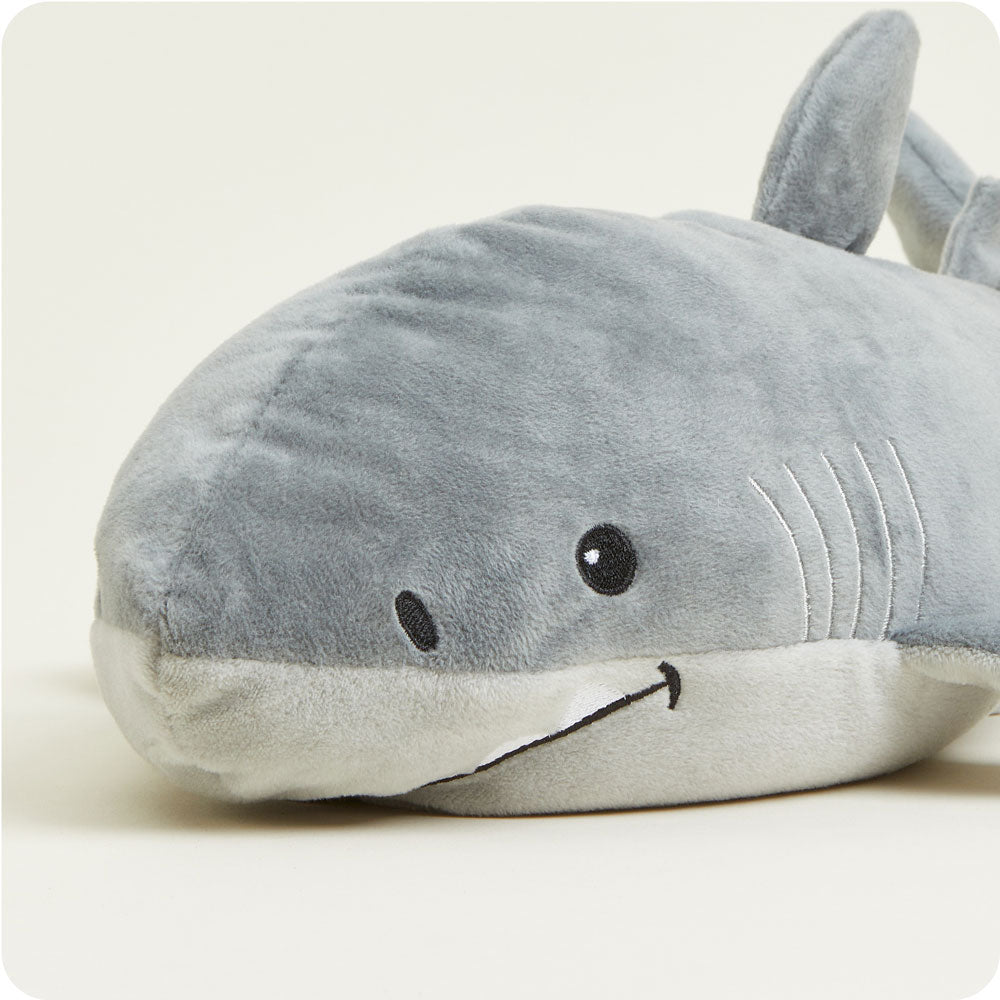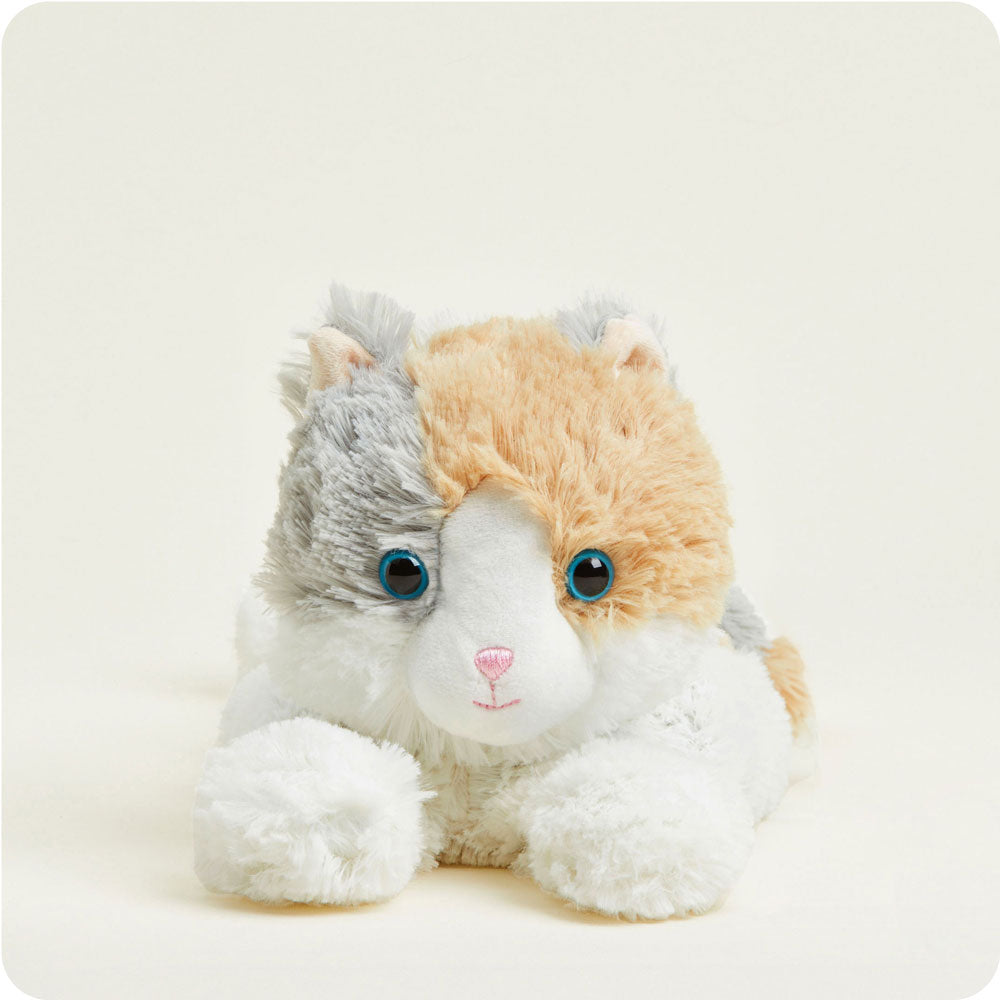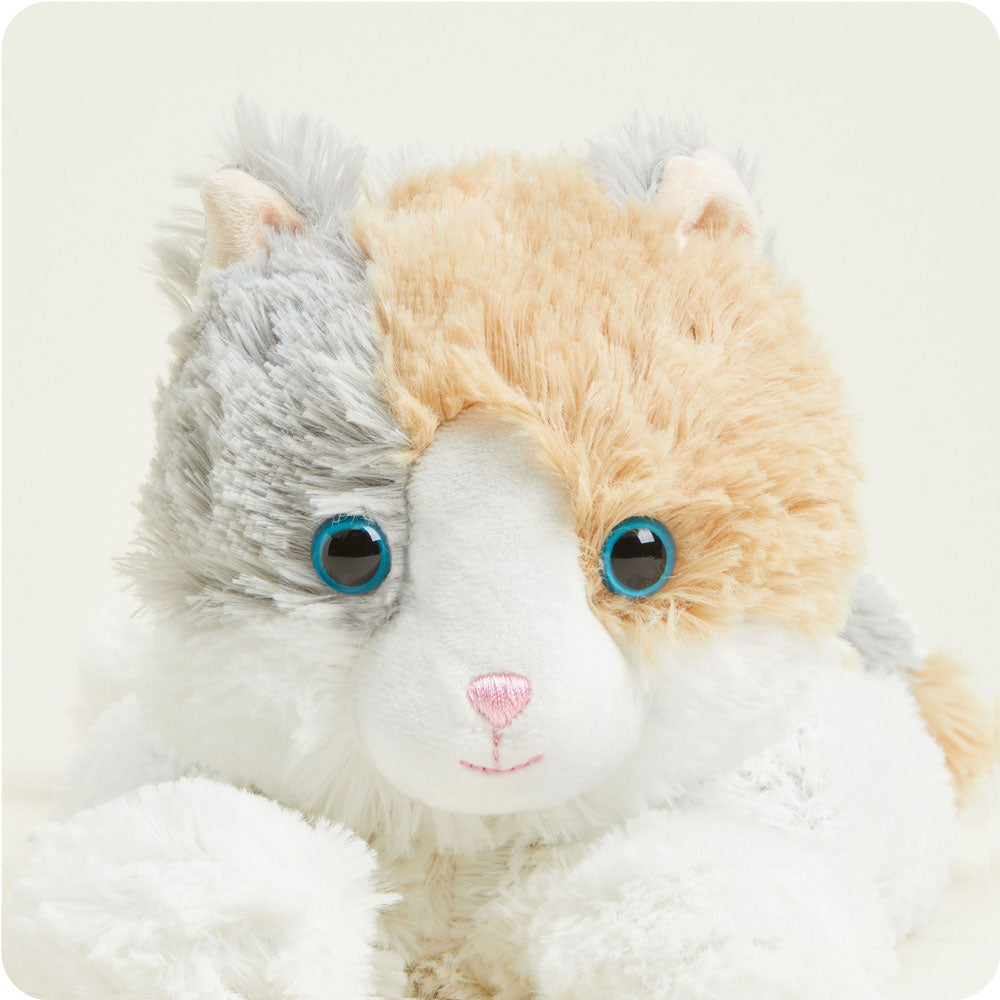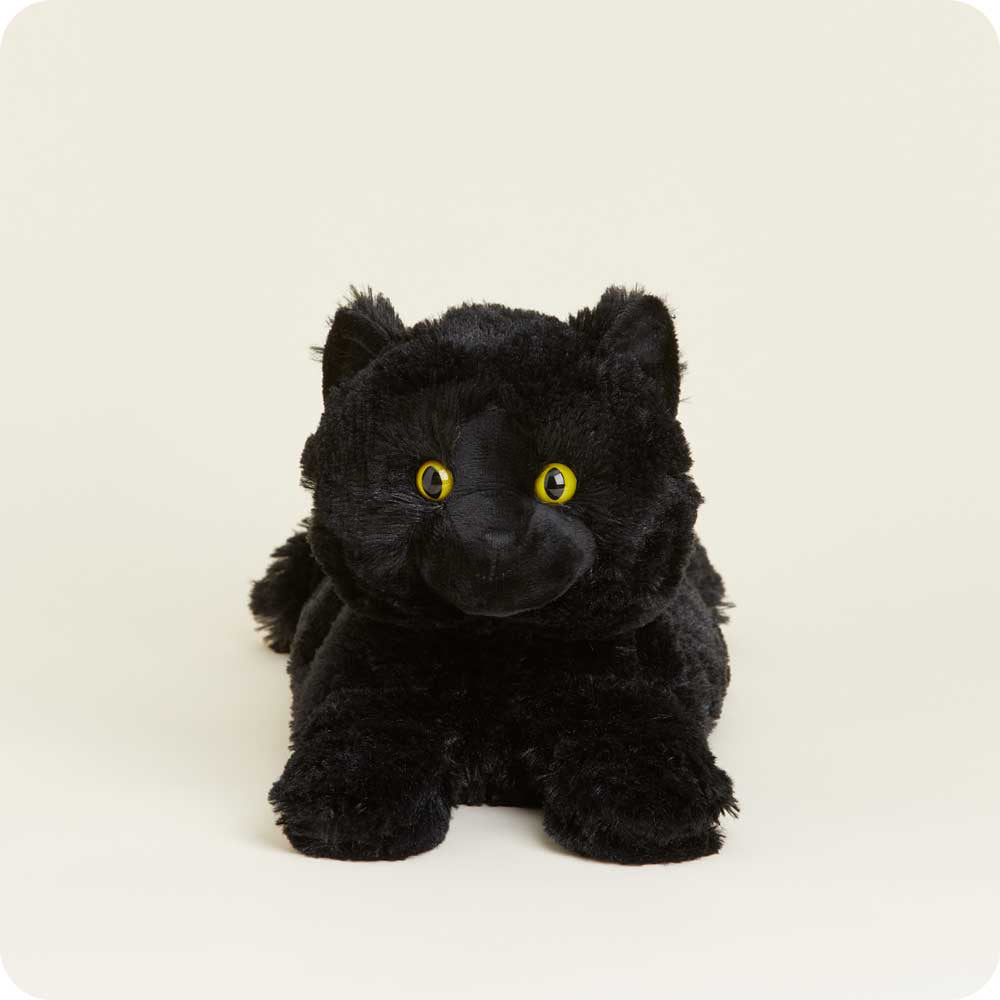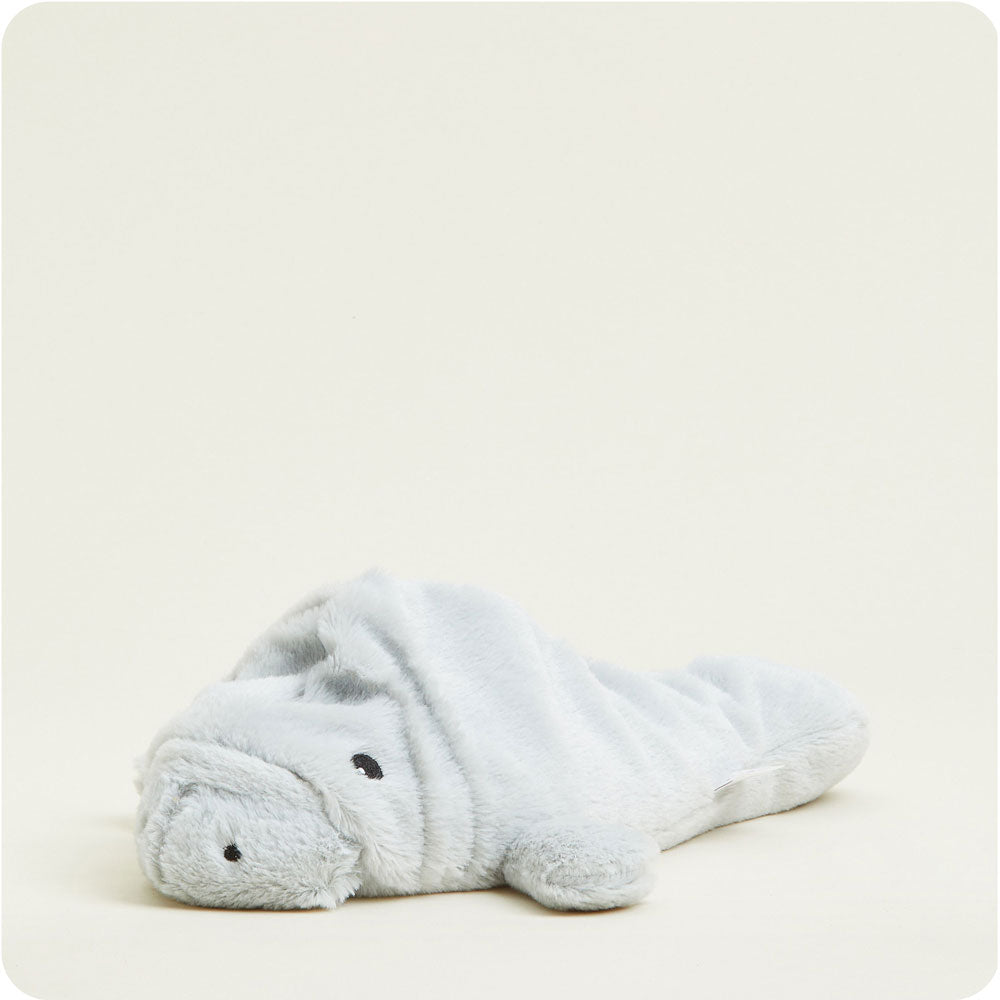Owl Stuffed Animal: They are a hoot. | Facts & Fun
Owls and Warmies: Comforting Owl Stuffed Animals

Owls have long fascinated humans with their enigmatic presence and distinctive, almost magical traits. Follow along as Warmies flies into the fascinating world of owls, uncovering the magnificent features that make them so unique, uncovering fun facts you may not know and looking into the famous owls of the motion pictures and silver screen. Read on to learn about the birds with silent flight and piercing eyes, who symbolize wisdom, mystery, and the unknown.
The Fascinating World of Owls
There are over 200 owl species found across the globe, inhabiting a variety of environments from dense forests and deserts to urban areas and tundras. Some well-known species include the Barn Owl, loved for its heart-shaped face; the Great Horned Owl, recognized by its prominent ear tufts; and the Snowy Owl, famed for its striking white plumage. Each species has adapted to its specific habitat, whether it be the camouflage needed in snowy environments or the ability to navigate dense woodland.
The unique features of owls are highly interesting, so it makes sense that these nocturnal birds are symbolic creatures for many cultures. Nocturnal vision is one of the most remarkable owl characteristics. Owls have large eyes relative to their body size, which allows them to gather more light. Their retinas are densely packed with rod cells that enhance their ability to see in low light conditions, making them admirable hunters in the dark of night.
Did you know owls can fly without making a sound? Silent flight is a lesser known feature Owls possess. Their feathers have unique, fringed edges that reduce noise while in flight. This adaptation enables them to approach prey stealthily, giving them a significant advantage during hunting. The silence of their flight is so effective that it can go unnoticed by prey and human observers, much to the dismay of bird watchers.
Owls have held significant places in various cultures throughout history. In ancient Greek mythology, the owl was associated with Athena, the goddess of wisdom and warfare, symbolizing knowledge and protection. The Romans also revered owls, considering them omens of good fortune and insight. In many Native American cultures, owls are seen as guardians of sacred knowledge and are believed to possess spiritual wisdom. Conversely, in some African and European folklore, owls are sometimes viewed as harbingers of death or misfortune due to their nocturnal nature and haunting calls. Owls are often associated with wisdom, mystery, and protection in literature and popular culture. Their presence in art, stories, and even as mascots reflects their enduring appeal and the deep-seated human fascination with these enigmatic birds.
The world of owls is one of incredible diversity and intrigue. The unique features of owl species, from their specialized vision to their silent flight, highlight their extraordinary adaptations as nocturnal birds. Across cultures, owl symbolism has ranged from representations of wisdom and protection to omens of misfortune, showcasing the complex relationship humans have with these mysterious creatures.
Exploring the Different Types of Owls

Now we’re flying into the diverse world of owls, where each species brings its own unique charm and fascinating characteristics to the table. From the ghostly barn owl to the majestic Eurasian Eagle-Owl, these incredible birds are full of surprises.
Barn Owl (Tyto alba) With a heart-shaped face and beautiful white plumage, the barn owl species is found all over the world. Most often seen in open habitats such as vast farmlands and grasslands. One of the coolest things about the barn owl is its silent flight and eerie screech, which sets it apart from the more common hoots of other owls.
Great Horned Owl (Bubo virginianus)
Next, up is the great horned owl. This large and beautiful owl has prominent ear tufts that look like horns, making it easy to recognize. It’s also highly adaptable, living in environments ranging from forests and deserts to urban areas across the Americas. Its powerful talons make it a formidable predator, enjoying a varied diet of mammals, birds, and even reptiles.
Snowy Owl (Bubo scandiacus)
The snowy owl is a fascinating and truly striking member of the owl family. Famous for its plush white feathers, this owl is perfectly adapted to cold, Arctic regions. During winter, snowy owls migrate to more open areas in North America. But as the seasons change so too does their plumage, helping them blend into their snowy surroundings.
Burrowing Owl (Athene cunicularia)
A small but mighty owl species is the burrowing owl. These are unique because they live in burrows and have long legs. Found in grasslands, deserts, and agricultural areas of the Americas, burrowing owls are diurnal, meaning they’re active during the day. They also have a distinctive bobbing motion when they feel threatened.
Eurasian Eagle-Owl (Bubo bubo)
One of the largest types of owls, the Eurasian eagle-owl boasts bright orange eyes and prominent ear tufts. This owl prefers rocky landscapes, forests, and steppes across Europe and Asia. With an impressive wingspan, it can hunt prey as large as deer fawns, showcasing its powerful hunting abilities.
Eastern Screech-Owl (Megascops asio)
If you live in eastern North America, you just may get to encounter the eastern screech-owl in real life! This small owl blends in perfectly with tree basks due to its ear tufts and dual color morphs of red and gray. Its lyrical trill call adds a touch of musical whimsy to its nightly activities.
Northern Saw-whet Owl (Aegolius acadicus)
Lastly, let’s not forget the tiny but mighty northern saw-whet owl. Found in dense forests across North America, this secretive owl has a round head and no ear tufts. Although hard to come by, this owl’s repetitive, high-pitched "toot" call and big, expressive eyes make it a delightful find for bird enthusiasts.
These distinctive habitats, behaviors, and features, highlight the incredible diversity within the owl species. Whether it’s the silent flight of the barn owl or the powerful hunting skills of the Eurasian eagle-owl, there’s always something new and exciting to learn about these amazing nocturnal birds.
7 Fun Facts About Owls

Owls are truly remarkable creatures, and there are plenty of fun and spooky owl facts that will shock and delight while showcasing unique owl traits and behaviors. Here are some fun owl information nuggets that will surely captivate your interest:
Fun Fact 1: Owls can rotate their heads up to 270 degrees
One of the most astonishing owl facts is that they can rotate their heads an impressive 270 degrees. This incredible flexibility is due to special adaptations in their necks and blood vessels. This ability is crucial for hunting and spotting predators, allowing owls to have a broad field of view without moving their bodies, which helps them remain stealthy and undetected.
Fun Fact 2: Owls have specialized feathers for silent flight
Owls have specially designed feathers with serrated edges that break up the turbulence, reducing noise as they fly. This adaptation allows them to swoop down on their prey silently, giving them a significant advantage in hunting. The sound-dampening ability of their feathers makes them some of the stealthiest predators in the animal kingdom.
Fun Fact 3: Some owl species can mimic the sounds of their prey
In the world of interesting owl trivia, the fact that some owls can mimic the sounds of their prey is particularly fascinating. For example, the northern pygmy owl is known to imitate the calls of small birds to lure them closer, making it easier to catch them. This clever hunting technique showcases the owl’s ingenuity and adaptability in securing food.
Fun Fact 4: Owls have three eyelids
Owls possess three eyelids, each serving a different purpose. The upper eyelid closes when the owl blinks, the lower eyelid closes when the owl sleeps, and a third, translucent eyelid, called the nictitating membrane, sweeps across the eye from front to back. This membrane cleans and protects the owl’s eyes, ensuring they remain in top condition for spotting prey even in challenging environments.
Fun Fact 5: Female owls are typically larger than males
In many owl species, females are larger than males. This size difference, known as reverse sexual dimorphism, has several evolutionary advantages. Larger females are better at incubating eggs and protecting their nests, while smaller males are more agile hunters, providing food for the female and their chicks. This division of roles helps ensure the survival and success of their offspring.
Fun Fact 6: Owls can see well in both low light and bright conditions
Owls are famous for their exceptional night vision, but did you know they can also see well in bright conditions? Their eyes have a high number of rod cells, which are sensitive to low light, and a structure called the tapetum lucidum, which reflects light through the retina to enhance vision in the dark. Additionally, their eyes can adjust to bright light, making them versatile hunters in various lighting conditions.
Fun Fact 7: Many owl species are excellent swimmers
While it may come as a surprise, many owl species are capable swimmers. Instances of owls swimming often occur when they accidentally fall into the water or need to escape predators. They use a breaststroke-like motion to propel themselves to safety. This rare behavior highlights the owl’s versatility and resilience in the wild.
These fun owl facts offer a glimpse into the extraordinary world of owls. The more we learn the more we understand why owls continue to captivate and amaze people around the globe with their remarkable adaptations and skills.
Owls in Pop Culture: Movies, TV Shows, Songs, and Books

Pop culture owls have long captured the imagination with their mysterious and wise presence, appearing prominently in films, television shows, songs, and books. Owls are often symbols of wisdom or mystery in films. A prime example of owls in movies is none other than the lovable Hedwig, Harry Potter's loyal snowy owl, who has become an iconic figure in the series. Harry Potter Hedwig merchandise sells far and wide and for good reason, he’s both adorable and loyal to Harry. Another notable film is Legend of the Guardians: Guardians of Ga'Hoole, which is an animated movie set in a fantasy world of warrior owls, showcasing their bravery and heroism.
In television shows, owls add depth and intrigue to the storylines. The cult classic Twin Peaks uses the phrase "The owls are not what they seem ''. Twin Peaks owls add an eerie, mysterious element to the show's mythology. Perhaps one of the most famous owls in TV shows is seen in Winnie the Pooh. Owl is a wise and knowledgeable character, often offering advice to the other inhabitants of the Hundred Acre Wood.
Owls have inspired music across various genres, reflecting their nocturnal and enigmatic nature. Owl City, the electronic music project by Adam Young, evokes the whimsical qualities of owls. Similarly, "Fly Like an Eagle" by Steve Miller Band, though not directly about owls, resonates with themes of flight and freedom, which align with the imagery of these majestic birds.
In literature, owls often symbolize wisdom, magic, and the unknown. Owl Babies by Martin Waddell is a beloved children's book about three baby owls waiting for their mother to return, capturing the nurturing aspect of owls. The Guardians of Ga'Hoole series by Kathryn Lasky follows the adventures of a group of owls in a fantastical world, celebrating their bravery and camaraderie.
These examples illustrate the significant impact and popularity of owls in popular culture, enriching our stories with their enchanting presence.
How to Use and Care for Your Warmies Owl Stuffed Animal

Warmies owl stuffed animals are unique in that you can microwave them for over an hour of warmth or chill them for cool soothing cuddles! If you’re interested in how to use Warmies, we’re here to help. Hint: it’s simple!
How to Heat Warmies
To heat your new “hoot” of friend, place it in the center of your microwave and heat for up to 90 seconds. At first, it may be best to check your Warmies in 30 second increments, as every microwave is different. Pro tip: wrap your Warmies in a paper towel before you heat it. This protects it from the inside of your microwave. Check out Warmies FAQ page for more specifics on safety and microwavable plush instructions.
How to Chill Warmies
To chill your Warmies, place it in a sealed zip lock bag and place in the freezer for at least 2 hours, although we’d recommend leaving it in overnight. When you're ready, remove the Warmies from its bag and cuddle away! Pro tip: Chilling Warmies is great for hot summer nights and to soothe aches, pains and bruises.
Cleaning Warmies
Warmies are made with love from soft, plush materials to ensure soothing snuggles. As they are heatable and chillable, properly caring for stuffed animals is important! It’s essential to follow Warmies microwavable plush instructions and read Warmies safety tips. Warmies need to be spot-cleaned by hand–not in the washing machine! Do not wash or dry them in the washing machine or submerge them in water.
- Use a damp sponge or towel to lightly spot-clean your Warmies.
- Gently use a soft brush to refresh their plush fur.
- Make sure they are stored in a cool, dry place after each cleaning and use.
Read more about how to use and clean your new cuddly plush stuffed animal in Warmies Care Guide.
Why Choose Warmies Owl Stuffed Animals?

Warmies offer the ultimate in comfort and relaxation with their adorable owl stuffed animals. These Warmies stuffed animals are more than just cuddly toys—they're microwavable plush companions that provide wellness benefits with soothing warmth and comfort. Infused with real French lavender, Warmies owl stuffed animals release a calming scent, designed to ease stress and promote better sleep.
Simply pop them in the microwave and they become cozy, aromatic cuddly buddies for people all ages. The therapeutic benefits of Warmies include relief from aches and pains, making them ideal for relaxation and self-care. Warmies lavender-infused toys are the perfect blend of comfort and gentle heat therapy–remember just because they’re “toys” doesn’t mean they’re just for kids! Experience the magic of Warmies for yourself as you elevate your self-care routine and your love of owls with their sweet, functional owl stuffed animals.
Bringing It All Together: The World of Owls and Warmies

In summary of owls, their diverse traits and fascinating behaviors across various species captivate our imagination. Owls inhabit unique environments and hold significant roles in popular culture. Meanwhile, Warmies owl stuffed animals offer soothing and therapeutic benefits, combining microwavable warmth with a calming lavender scent. These therapeutic stuffed animals provide emotional and physical comfort, making them ideal companions for all ages. Explore the enchanting world of unique owl species and experience Warmies owl benefits for yourself. These comforting weighted owl plush toys from Warmies for ultimate relaxation and well-being.











